Descrizione prodotto
Our maple/spruce Grand Auditorium has always been a versatile performer, and this edition boasts an array of tone-enhancing refinements that transform maple’s tone profile into a richer, warmer and more complex voice. As a result, players can expect an even more dynamic and expressive musical tool. Design nuances include a maple-specific back bracing profile and a special seasoning process for the spruce top called torrefaction, a method of roasting the wood to produce an aged tonal character with greater acoustic resonance and responsiveness. Other touches include the use of protein glues to optimize the tonal transfer between key wood components and an ultra-thin, 3.5-mil gloss finish to minimize dampening. A new, hand-rubbed “Brown Sugar” stain on the back and sides gives maple’s striking figure a beautiful violin-hued appearance without adding extra thickness to the finish. Featured appointments include ivoroid Wings fretboard inlays, an inlaid ebony backstrap, ebony binding with ivoroid purfling, an ebony/ivoroid rosette, and a striped ebony pickguard, along with Taylor’s Expression System® 2 acoustic electronics. The guitar comes with a deluxe hardshell case.
Back & Sides Maple
Maple has long been associated with a bright acoustic sound, but Taylor’s maple guitars are voiced to bring out greater warmth, richness and sustain. This broadens maple’s tonal range from a single-dimension sound to a more musical, more versatile voice.
Top Sitka Spruce Torrified
The most commonly used wood for guitar tops, Sitka generates a broad dynamic range and accommodates numerous playing styles, from aggressive strumming to fingerpicking.
BRACING
A guitar’s bracing patterns orchestrate the movement of the top and back, working with the overall body shape and tone woods to produce a unique acoustic voice. For the redesign of the 800 Series, the bracing profiles and their placement were customized for each body shape to emphasize their inherent strengths and to complement the playing styles that might suit the shape. The bracing for the back and sides of Grand Auditorium and Grand Concert models was also modified from a standard horizontal, ladder-style pattern to a slanted scheme to change the internal tension of the back. Another refinement was the addition of side braces, which add rigidity to the sides and enhance the top and back movement.With the reconfigured relationship between the top and back bracing, each shape generates a well-balanced tone whose differences are most noticeable in the midrange. “The midrange is the friendly and flattering part of the guitar,” Andy Powers explains. “This sounds warmer across the board. In this case, you have this nice, cushy swell and long sustain, even with a delicate touch.” Wood ThicknessOptimized dimensions help bring out the best of each body shape.800 Series Story | Taylor Guitars Another subtle recalibration that relates to the bracing is in the top and back thickness specification for each body shape. It’s one of many refinements designed to bring more efficiency of movement to the overall guitar. Generally speaking, the smaller the guitar, the thinner the wood, as Andy Powers explains, using Taylor’s Grand Concert (GC) as an example. “Because of its smaller outline, the GC is inherently a stiffer body,” he says. “By making the parts a little thinner and more flexible, we can maximize what a player can get out of that guitar, like more volume.” “Andy’s got a great sense for how thin and light you can go to make it sound great and still be equally strong,” Bob Taylor says. “Youcan actually flatpick that GC and it’s pretty loud ”
PROTEIN GLUE
Protein GlueThe strategic use of animal glues helps enhance the transfer of tone between important guitar components.800 Series Story | Taylor Guitars The type of glue used between parts where tone is transferred, such as the bracing and bridge, can influence the tone. Some synthetic glues can partially impede tone, while animal protein glues transfer it well. Animal-derived glues were used to make musical instruments for centuries before the introduction of man-made woodworking glues in the 20th century. Factories moved away from hide glues because they needed to be constantly tended.Today’s modern protein glues are much easier to work with. Andy Powers chose fish protein glue for the top and back bracing because the braces provide an energy transmission network for the top and back of the guitar and the fish glue optimizes the tonal transfer. Its strong adhesion properties also allow the guitar to be built more lightly without sacrificing strength.Traditional heated hide glue was chosen to mate the bridge with the soundboard. It’s something that can be managed in the Taylor factory, its properties make it more suitable for the ebony/spruce joint, and its natural characteristics make it easy to clean any residue off a thin-finished top
STRINGS
We switched to phosphor bronze strings and worked with ELIXIR® Strings to create a custom-gauge HD Light string set for the Grand Concert and Grand Auditorium 800 Series Story | Taylor Guitars One sign of a great guitar is its ability to sound like the same instrument from the lowest note to the highest note. A guitar’s strings can play an important role in expressing this. Andy Powers began by switching from Elixir Acoustic 80/20 Bronze with NANOWEB® coating to Elixir’s Phosphor Bronze NANOWEB® set. “The phosphor bronze strings have a nice, rich shimmer on the high end, with a richer, broader warmth overall,” he says. More specifically, Andy explored alternative string gauge options for the smaller-bodied Grand Concert and Grand Auditorium. Andy felt the overall articulation could be enhanced by creating the right tension profile at the bridge. Some creative collaboration with our friends at Elixir Strings led to the development of a unique set, named HD Light, which blends Elixir light- and medium-gauge strings with a custom .025 gauge third string (a standard light-gauge G string is a .024; the medium is a .026). The specific gauging is: .013, .017, .025, .032, .042, .053. The custom gauging complements the construction of the Grand Concert and Grand Auditorium and yields bolder highs and fuller lows.
ELECTRONICS EXPSYS2
The new Expression System® 2 captures more of a guitar’s dynamic properties using a breakthrough behind-the-saddle design. 800 Series Story | Taylor Guitars Another tone-enhancing design stroke is a new version of the Expression System pickup, the Expression System 2 (ES2). Taylor pickup designer David Hosler had been studying under-saddle piezo transducers and how they capture a guitar’s energy as it is transferred from the strings through the saddle and soundboard.The industry’s prevailing understanding had been that the top and string vibration cause the saddle to “bounce” up and down.This has long been the basis for the placement of a piezo- electric transducer under the saddle.But Hosler found that the vertical movement is heavily restricted because the string tension’s downward pressure essentially locks the saddle down. That’s why a traditional under-saddle pickup with piezo-electric crystals often responds with a sound often characterized as thin, brittle or synthetic.In reality, the saddle’s natural range of movement is back and forth like a pendulum. That revelation led Hosler to relocate the piezo crystals from under the saddle to behind it, just barely making contact with it. The new positioning enables the crystals to respond more naturally to the guitar’s energy as it was transferred through the saddle. The patent-pending ES2 design incorporates three pickup sensors that are installedbehind the saddle, through the bridge, with three tiny Allen screws that calibrate the pressure of the sensors against the saddle.
INLAYS
Because the 800 Series has traditionally featured a shell material for the rosette, Andy chose green abalone and framed both edges with rosewood to complement the top trim. A new fretboard inlay motif, featuring mother-of-pearl and named “Element,” was inspired by the diamond-like shape of the different 800 Series inlays over the years. “I knew I wanted to do something that projected a diamond-like silhouette, that didn’t have straight lines, and that had points somewhere,” Andy explains. “And to me it needed to have a certain marriage of organic and elegant qualities. I wanted graceful curves that matched each other well and said a lot to a lot of different people. Depending on who’s looking at it, the perception of what that inlay is varies widely.”
FRETBOARD
The appearance of the ebony fretboards was also carefully considered. Given Taylor’s position as a co-owner of an ebony mill in Cameroon and Bob Taylor’s advocacy for the use of colored ebony to support a more sustainable model of consumption, Bob and Andy agreed that the 800s were an appropriate place to use fretboards with light brown coloration. “If you could stand in an ebony sawmill like ours and look at all the non-black ebony that was being tossed aside like trash it would break your heart,” Bob says. “Not only is it a waste of material, but it’s a waste of some of the most beautiful pieces of wood I’ve ever seen. I’m proud to be able to share this wood with our Taylor family.” As a result, each 800 Series fretboard will project its own unique character. “I love the look,” Andy says. “To me, seeing smoky ebony always looks like a cloudy sky at night.”
PICKGUARD
Taylor Guitars One of the most dramatic visual distinctions of the new appointment package for the 600s is a switch from our traditional faux tortoise shell pickguard to one made of Striped Ebony.
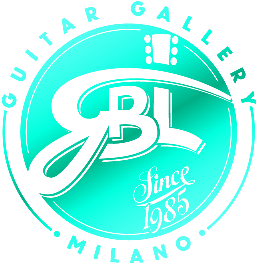
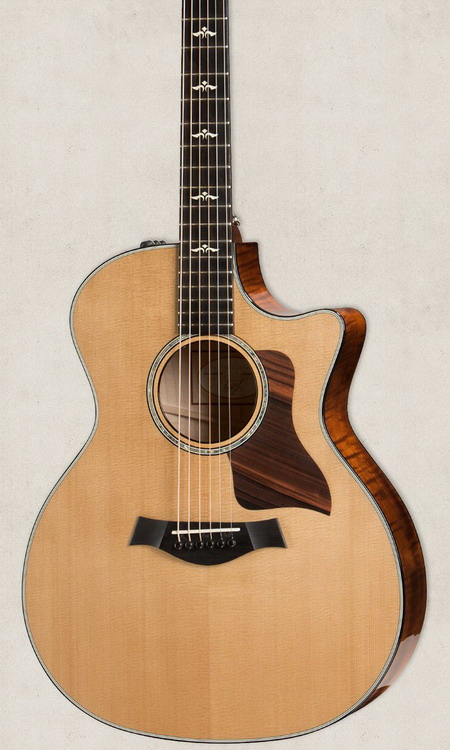
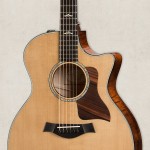
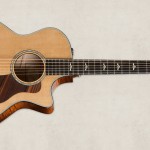
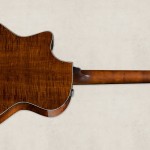

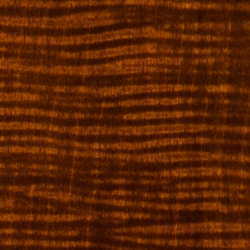
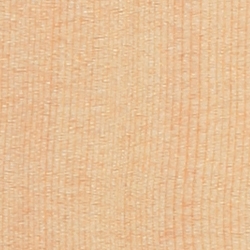
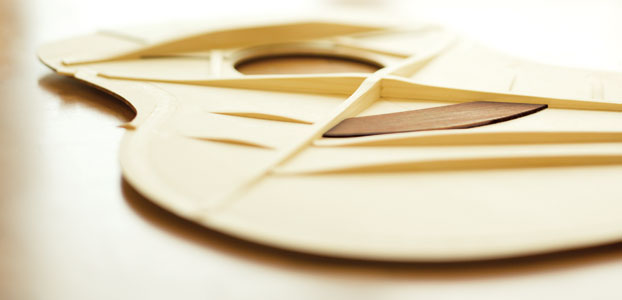
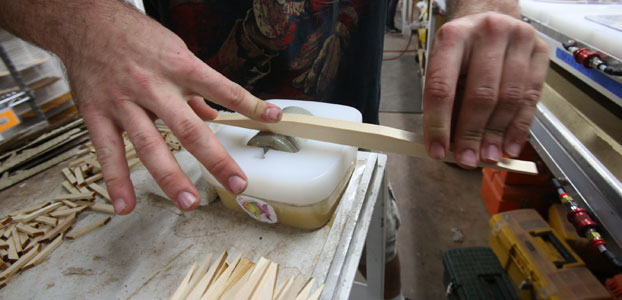
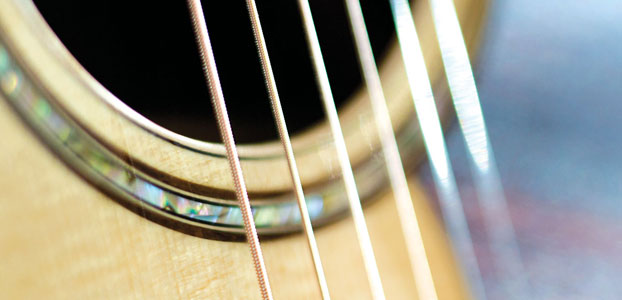

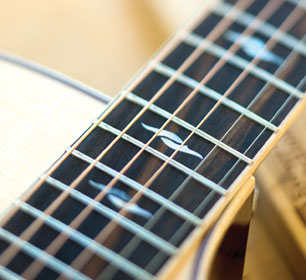
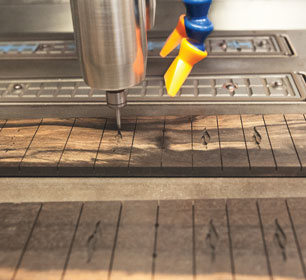
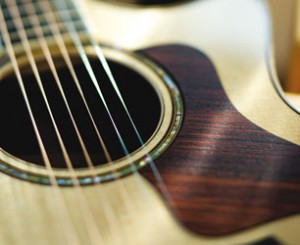
Be the first to review “TAYLOR 614 CE 2015 EDITION EXPRESSION 2 TORRIFIED TOP”
Devi essere connesso per inviare un commento.